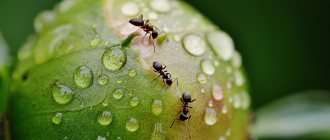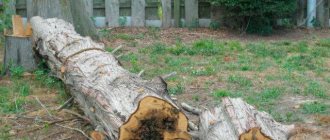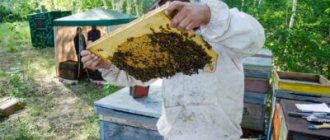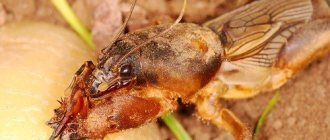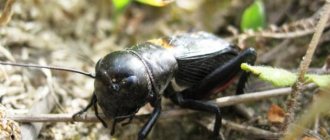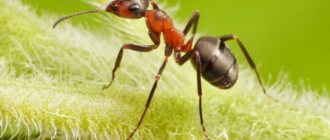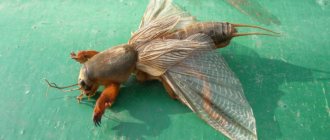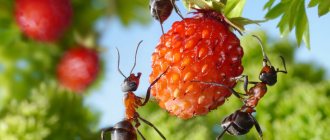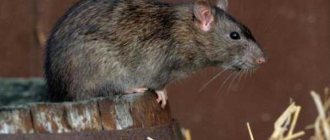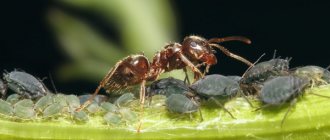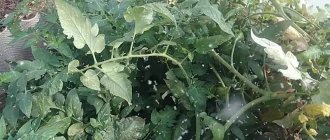Description of the slug clan
- Fact:
It is not so easy to detect the harmful guests themselves, but traces of their presence remain everywhere. - Fact 2:
They are awake at night, during the day they hide from the sun’s rays under the leaves of plants, and in the morning one can only lament the results of their feasts. - Fact 3:
Slugs are omnivores and do not disdain almost any plantings in the garden. - Fact 4:
Slugs have gained great popularity in the pet market.
An unpleasant, but familiar situation to many owners of personal plots: you go out in the morning to your caressed and well-groomed green “kingdom”, and it’s as if sloppy and impudent guests are running the show. The berries are bitten, the fruits are undermined, the vegetables are also damaged. And on top of that, all the berry, fruit and vegetable deliciousness is smeared with a nasty slimy coating. Congratulations! Your site was chosen by new residents whom you did not invite, but they came and had a good feast at night.
This is a common practice among slugs. They are awake at night, during the day they hide from the sun's rays under the leaves of plants, and in the morning one can only lament the results of their feasts. It is not so easy to detect the harmful guests themselves, but traces of their presence remain everywhere. These insects are omnivores and do not disdain almost any plantings in the garden. There are a huge number of varieties of slugs, but there are several species that are the most numerous and famous.
Garden slug
Another name for him is Naked. The elongated body of the slug is small (25-30 mm) and wet all the time, as it secretes lubricant (mucus) around the clock. He is also able to change the shape of his body by contracting his muscles. This species has an unremarkable, inconspicuous color:
- Grayish.
- Yellowish.
- Faded brown.
In the mouth there is a tongue with rows of many teeth, resembling a grater. In the front part of the body there are tentacles, and on them are organs of vision.
You can meet the garden slug throughout European territory. The diet includes any fruits, vegetables and berries, but they are especially loved:
- Tomatoes
- Strawberry
- Strawberries
- Cabbage.
The slug eats stems, leaves, and fruits. In the latter he makes holes and passages, the plants begin to rot and lose their marketable and aesthetic appearance.
It is most active if the weather is damp and gloomy, at night and in the pre-dawn morning hours. It hides from the burning rays of the sun under soil lumps, in lowlands with high humidity, in places shaded by plant leaves.
In areas where the humidity level is constantly high (near rivers and places where groundwater is on the very surface), they breed especially a lot. A female slug lays up to four hundred eggs at a time. After overwintering underground, young individuals come out with the arrival of spring.
Appearance
The slug's body has three parts:
- Head . Her clam can lift up. The head is equipped with two pairs of tentacles. One of them is long, with eyes and smell receptors. The second pair is short, these are the organs of taste and touch. There is a mouth opening on the lower front of the head.
- Body equipped with a mantle . The body is stretched and slightly flattened. The mantle is located immediately behind the head on the dorsal side. In this convex collar there is a lung, and on the side on the right there is an outlet for collecting air for breathing. Near the anal exit.
- Leg . This is the outermost part of the mollusk, with the help of which the slug crawls.
The skin of a gastropod is thin, hairless and constantly covered with a special secretion (mucus), which cools the body, helps it glide and protects it from enemies. The color of the body is also protective: sand, brown, gray, brown, sometimes with small white and black spots. The sizes can be diametrically opposite. It all depends on the species, there are 2 mm ones, and there are also 30 cm giants.
naked slug
This is not a very large representative of the slug family, 60-70 mm, and the most ardent supporter of vegetable gardens and gardens. It is this species that is most common on farmland . It eats absolutely any plantings. His menu of preferences includes more than 160 cultures. The slug's appearance is inconspicuous. The body may have a brownish, grayish or beige tint with white or yellow splashes.
This species secretes a lot of mucus to lubricate the body, much more than other species. Its secretions are so abundant that slimy paths remain in the places where the slug crawls. The naked species is widespread throughout Europe, due to its great fertility.
The best slug repellents
Thunderstorm (Meta)
Slug spray was originally produced in Switzerland under the name "Meta", and has been considered one of the most productive and safe means of killing garden slugs for about a century.
What is it issued in (form of release)? Packaged in the form of blue granules. One package contains 15 g or 60 g of the drug.
Chemical composition. The base substance of “Thunderstorms” is metaldehyde and other auxiliary additives.
Method of action of the drug . Since this is an intestinal and contact drug, it exerts its effect upon direct contact with the slug’s body. The granules quickly absorb moisture and literally dry out the pests, depriving them of protective mucus and the ability to move easily. Slugs also readily eat pellets and die from poisoning within 2 hours.
Duration of action of the drug. From 2 to 3 weeks. Shelf life 24 days.
When to use? The effectiveness of the drug has been proven even after heavy rainfall. “Thunderstorm” can be used both in dry, windless weather and in the rainy season, when slugs are attracted to a humid environment. Granules with the first sprouted stems and blossoming leaves are scattered on the plot of land. Traditionally, “Thunderstorm” should be applied at the beginning of spring to protect young, fragile shoots.
Dosage . The standard consumption rate is 30 g of the drug per 10 square meters. m of territory or 15 g per 5 sq. m. m. 2-3 treatments per season are enough.
Mode of application . The drug is optimal for protecting grapes, berries, as well as citrus, vegetable, fruit, and flower crops. Granules of the substance are scattered under plants in places where slugs accumulate: between rows and on paths. You should avoid getting the granules into the leaves of cabbage or lettuce so that the poison does not end up in the food. The granules are destroyed by burning.
Toxicity . Due to the content of some harmful additives in the granules, “Groza” kills slugs, but can attract other pests and scare away birds that would help fight them. It is not advisable to use "Thunderstorm" in rooms for storing crops, such as cellars with potato tubers and other vegetables.
The drug is practically harmless to earthworms, bees, fish, algae and most plants. Hazard class for humans - 3.
The drug is extremely toxic for both adults and children and pets if it enters the body with food or in the eyes. After harvesting, any vegetables and fruits must be thoroughly washed if “Groza” was used nearby. When working with a moderately hazardous substance, you need to protect your eyes and respiratory tract with goggles, a respirator or a gauze bandage.
Ulicide
An effective and natural remedy used in the fight against slugs and snails, which kills pests by intestinal contact. Produced in Ukraine.
What is it issued in (form of release)? Sold in packs of 20 g (70 pieces) and 50 g (50 pieces), contains small bait granules, colored blue.
Chemical composition. The key substance is iron phosphate. Other ingredients include a grain mixture, wood ash, black pepper, hops, mustard, sugar, salt, and kaolin.
Mode of action of the drug . Dehydrates the bodies of slugs after direct contact, after which they die under a layer of soil.
Duration of action of the drug . Once the slugs have consumed the pellets, it may take a week before they die. Compatibility with other drugs. Thanks to its ecological composition, it can be safely combined with other types of anti-molluscan substances, including tobacco dust.
When to use? The drug should be used at the first appearance of slugs in the garden beds. The granules are resistant to erosion, so Ulicide can be used even after it has rained. Consumption rate: 3-5 g per 1 sq. m. plot. One treatment per season is enough.
Mode of application . The granules are scattered in the indicated doses under plant bushes or in paths and between rows.
Toxicity . The poison is absolutely safe for bees, earthworms, garden and ornamental plants. Due to its natural composition, the drug is not attractive to animals and birds, which eliminates their poisoning. After the expiration date, the product breaks down in the soil into natural elements - iron and phosphorus. Does not pose any danger to human health.
Metaldehyde
One of the most famous and inexpensive drugs used in the fight against slugs and snails. The most common drugs are those produced by Lonza and August, and Green Pharmacy Sadovoda.
What is it issued in (form of issue)? Packaged in packages with small blue granules.
Chemical composition . The main substance in the composition is poisonous metaldehyde (tetramer of acetaldehyde). Lonza's Metaldehyde uses bittering additives that repel dogs.
Mode of action of the drug . Attracts pests using the same principle as regular beer or fermented fruit.
Duration of action of the drug. From 14 to 21 days. At the end of the shelf life, it completely decomposes in the ground.
When to use? Manufacturers claim that the effectiveness of the drug remains even after frequent rains, but the experience of gardeners shows that the granules quickly dissolve in water (2-3 rainfalls are enough).
Has a detrimental drying effect on slugs upon direct contact. If ingested, it destroys the digestive system. The preparation should be spread in warm and dry weather, with the first appearance of slugs, in the midst of spring. Does not require special preparation and is available in ready-made granules. The consumption of the substance is 15 g per 5 sq.m.
Method of application : Scatters in the required places under the leaves of plants. For greater savings, you can place the granules between the rows.
Toxicity . 3rd class of danger to humans. The drug is dangerous for pets (especially dogs), adults and children. Not too toxic to fish, microorganisms and worms. Experts do not recommend spreading Metaldehyde near fruit-bearing plants. Even after thoroughly washing vegetables, fruits and berries where the drug was spilled nearby, there is a minimal risk that some of the poison remains.
Netted slug
This mollusk is small, up to 30 mm, and is colored quite specifically. The main background is beige, with a mesh pattern of thin dark stripes drawn across it. The mesh is especially pronounced on the dorsal part and mantle. The tentacles are usually monochromatic and black.
They inhabit the territory of Eastern Europe, including the Russian Federation and the CIS. It does not favor forests, nor areas with lush shrub vegetation, but garbage dumps, fields, meadows, and vegetable gardens are just right for it . The mesh type is called the most harmful. Its activity leads to significant crop losses, especially in cabbage plantations. It renders the heads of cabbage completely unusable due to numerous gnawed internal passages. If the summer is rainy, it may invade winter crops.
Origin of the species and description
Photo: Slug
Slugs belong to a large group of animals - gastropods. There are an estimated 100,000 species of molluscs, and with the exception of gastropods, all other classes are marine life. The most common forms are marine gastropods such as sea slugs and snails.
A slug is basically a snail without a shell that actually evolved from a snail. To this day, most slugs still have remnants of this shell, called the "mantle", which is usually internal. Several species have a small outer shell.
Video: Slug
Losing the shell may seem like a rather unwise evolutionary move since it provided some degree of protection, but the slug had a cunning plan. You see, he can now easily glide through the spaces between the soil—an almost impossible feat while carrying the bulky shell on his back. This opens up a whole new underground world for the slug to inhabit, a world safe from the many land-based predators that still prey on the snail.
The slug moves using a sort of "muscle leg" and because it is quite delicate and the ground is quite rough, it secretes mucus which it slides on. This mucus is hygroscopic, meaning it absorbs moisture and becomes more effective. This is the reason why slugs prefer damp conditions; the need to produce excessive mucus in drier weather can cause dehydration.
Fun fact: Slime slug trails are a tactical compromise. The slug loses water in its mucus, which limits its activity to cool, damp nights or rainy days, but the lubrication the mucus creates saves energy that would otherwise be needed to overcome friction.
Slugs must stay moist or they will dehydrate and die. This is another reason why they are more active in wet weather. This also explains why they are mostly nocturnal - to avoid the heat of the day. Unlike snails, slugs do not have shells. Their entire body is one strong, muscular leg, covered in mucus, which makes it easier to move on the ground and prevents injury. Slugs can safely navigate rocks and other sharp objects, including a razor blade.
Great European slug
This species is one of the largest. The mollusk can grow up to 15 cm in length. In addition, the European slug has an extraordinary appearance: its coloring is similar to that of a cheetah, the same light background and black spots.
The big slug is lazy as hell. He really doesn't like movement and changes in his habitat . Having settled in a greenhouse or cellar, he will spend the rest of his life there. He is unpretentious in his food preferences and eats everything. whatever comes to hand, including mushrooms and roots.
Preventing the appearance of slugs in the house
It's good to know how to exterminate slugs, but it's even better to take all measures to ensure that they never take up residence in your home. Below is a list of preventive actions against these mollusks:
- regularly clean the cellar and other rooms where slugs may live;
- drying and ventilating the cellar and other premises;
- before storing root crops and potato tubers in the cellar, you need to dry them a little;
- It is advisable to whitewash the walls and ceilings of the cellar with lime.
Slugs are unpleasant neighbors for people and, therefore, it is important to take preventive measures to avoid proximity to them. And if these mollusks are infested in the house, you must immediately choose the appropriate option to combat them and immediately take action.
Orange (brown) slug
It is considered medium-sized, 70-80 mm. It has an orange, rusty or brown body with folds and wrinkles. But the mantle, which occupies a third of the body, is smooth. This variety is adapted to cold weather, therefore it inhabits the European north and all regions of Siberia, choosing forests of any type (coniferous, mixed, deciduous). Sometimes it is found in the territories of old cemeteries, where there are a lot of tree plantings or unimproved park areas.
Nocturnal, awake from sunset to dawn. It feeds on carrion, rotten roots, mushrooms, and fallen leaves. In garden plots located near forests, it will definitely find a place to destroy plantings of cabbage, lettuce and other vegetable crops.
Slug diet
On the menu, the mollusk prefers the healthiest and strongest plants. In the oral organ it has a jaw, equipped with a sharp edge with a chitinous coating and a tongue, with chitinous grater teeth (scientifically called radulas). The slug grinds food with its jaws and leaves clearly visible cuts with a smooth edge on the fruits.
The pest's taste preferences include mushrooms, weed plant remains, juicy pulp of garden crops, berries, root vegetables, and vegetables. In addition to destroying the crop, the mollusk is also capable of “rewarding” what it did not eat with mold, bacteria or viruses. Some varieties of the parasite are intermediate hosts of worms that parasitize poultry. That is why you should never feed found slugs to chickens, ducks, geese and other homestead animals.
Even if a slug does not damage the plant, but simply crawls over it, then this will also lead to nothing good. Firstly, the slime trail left behind the mollusk contaminates the plant, clogs the pores and provokes rotting. Secondly, it’s simply unpleasant, and even after washing, it’s unlikely that anyone will want to eat such a vegetable “treated” with slugs.
The slug loves some crops especially tenderly (can be used to make bait):
- Cabbage.
- Dandelions.
- Salad (until the arrow forms).
- Strawberries.
- Woodlice grass and shepherd's purse.
- All cruciferous vegetables (except mustard).
Large roadside (leopard) slug
One of the larger species. Wrinkled, rounded body up to 200 mm long with a pointed rear end. The background color is light, from pale gray to ash chestnut, with black spots, like a leopard.
The homeland of the roadside mollusk is Europe, especially its Central and Northwestern parts . The main feature of the species is its unusual mating method. Sexually mature individuals are attached to a tree or any support with the help of the same irreplaceable mucus, formed into a thick, strong rope. On such a “swing” slugs hang as if floating in the air.
Slime[ | ]
Slugs produce two types of mucus: one that is thin and watery, and one that is thick and sticky. Both are hygroscopic. Liquid mucus spreads from the center of the leg to the edges. Thick mucus unfolds from front to back.
Mucus is very important to slugs because it helps them move and contains fibers that prevent them from sliding down vertical surfaces. The mucus also provides protection from predators and helps retain moisture. Some species use mucus cords to prostrate themselves on the ground or temporarily suspend themselves during mating.
Red triangle slug
This fellow belongs to the exotic species. Its homeland is Eastern Australia. Its appearance is quite different from other species:
- There are only 2 tentacles on the body (the others have 4).
- Bright, noticeable color (pale pink, white, red, olive, cream).
- A clear purple robe in the shape of a triangle.
The dimensions are large enough to examine the mollusk carefully, 14-15 cm. Like all slugs, it loves moisture and settles in the shady bushes of gardens and forests. Very often he strives to get into a residential building, or rather, a bathroom. It lives there, feeding on mold. In the wild, it is capable of eating lichens on trees, especially eucalyptus trunks.
What do slugs eat and who feeds on them?
In nature, slugs most often live in damp, dark, sheltered places. Their surface practically does not retain moisture, so under direct rays they dry out and die. This explains the fact that you won’t find slugs in the desert, but there are plenty of them in forests, gardens and vegetable gardens. But they won’t take root in the bath either, despite the suitable conditions, since they simply have nothing to eat there.
Nocturnal creatures feed on the remains of organic food - humus, mulch, rot. But sometimes they are not averse to eating fresh plant leaves and berries; they are very fond of strawberries, which is why they are considered quite dangerous garden pests. There are predatory species that attack worms, and especially large individuals can eat newborn mice or chicks.
Important! They are usually classified as agricultural pests, because just one slug per day can significantly reduce the harvest. The fact is that it does not finish eating the berries, but crawls over, damaging many fruits. As a result, the harvest turns out to be spoiled: it seems that not all of it has been destroyed, but no one will finish eating after the parasite. Field slugs cause particular harm.
Gardeners and gardeners invent many traps to scare away or kill it. But! On the other hand, these creatures actively participate in the formation of humus and process the top layer of soil, making it more fertile.
How do they drink? Everything is simple here: the mollusk licks moisture from the surface of the leaves, thereby replenishing the supply of liquid, which is then processed into mucus, necessary for movement and maintaining normal body humidity.
Nature has taken care of regulating their numbers, creating a huge number of those who eat slugs, and moreover, considers them the best delicacy. One of the most terrible natural enemies is the ground beetle. This is a nocturnal predator, insatiable and incredibly voracious. Soft, defenseless gastropods are his favorite food. During the night, the ground beetle destroys up to several dozen small pests and several large ones.
Another fan of eating a large slug is the hedgehog. It also actively hunts at night, preferring the soft, nutrient-rich body of its unshelled relative, the snail. Again, a dozen or two pests will die in one night under the sharp teeth of a hedgehog. Toads, grasshoppers, frogs, salamanders and birds of prey also catch slugs.
Great spotted slug
It grows up to 13 cm in length and is completely covered with small black dots on the mantle. The oval body is decorated with longitudinal dark stripes. The creature is quite thermophilic, so it prefers to live in southern European regions and the territory of Asia. In areas with colder climates it can live exclusively in greenhouses and greenhouses. Loves to eat mushrooms (champignons are a special love) and various vegetables.
Since it has a considerable size, it causes no small harm. The life expectancy for a mollusk is impressive - 3-4 years .
banana slug
It is enormous in size, only slightly inferior to the giant representative, as much as 25 cm. A distinctive feature of the banana clam is its color . Bright, yellow (less often green or white), plain. Only sometimes with dark dorsal markings. The upper horns are equipped with visual organs, and the lower ones with olfactory organs.
The banana species inhabits North America, from Alaska to the Pacific coast. Despite the name, the slug does not eat bananas, but mushrooms, rotting grass, lichens and animal excrement. Changes color depending on the composition of the diet.
Upon fertilization, the female lays up to 75 eggs, which overwinter in a dark, damp place. Adults are also dormant during periods of dry climate and high temperatures. Regularly releasing lubricant prevents the mollusk from drying out during hibernation.
Sense organs[ | ]
Like snails, most of the slugs' sensory receptors are concentrated around the head. Nerve nodes, or ganglia, process information received by two pairs of tentacles. The lower, shorter pair are sensory tentacles that are used as an organ of smell, touch and possibly taste. The upper, longer pair are the tentacles of vision (or optical tentacles), sensitive to light and odors. Although slugs cannot distinguish colors, they can easily distinguish light from dark.
Slugs have 100 - 5000 photosensitive cells, each surrounded by many pigment cells. There are a large number of microvilli on the surface of photosensitive cells. It is believed that these are the light-sensitive areas of these cells. The lobes of the mouth can act as an organ of touch, distinguishing between different surfaces. When a slug loses one of its tentacles, it grows back. For example, in representatives of the species Arion ater
it takes 1-2 months.
From the head, nerves run along the entire body, both to the leg to control movement and to the digestive system.
Big black slug
This is the largest mollusk from the slug family existing on the planet. The length of its body is 30 cm. According to the name, this species is coal-black, with a black mantle, only along the edges with a small inclusion of small light dots. The lower part (sole) is two-tone: black center and gray sides.
The black giant's homeland is Europe (mainly Central and Western). In the northern parts it can only survive in greenhouse conditions . Egg laying up to 100 eggs.
The diet is mushroom, don’t mind eating vegetables. If there is no usual food, it is capable of eating lichens. Gigantic size means a corresponding appetite. Therefore, the damage from the mollusk is colossal.
forest slug
Interesting representative. During the biological cycle it reaches 15 cm, and is able to reproduce at only 3 cm in length. Young animals have a chestnut color, which changes as they grow older. The older generation has a wide range of colors: from milky to anthracite.
Eats everything: mushrooms, carrion, plants, both living and rotting . Great Britain, Germany and Ireland have included the forest slug in the Red Book due to the small number of the species. The general distribution area is extensive:
- British Isles.
- Northern Europe.
- Pacific Northwest Coast.
Ground slugs[ | ]
Different types of British slugs
Most land slugs belong to the pulmonate snails from the group of stalked snails ( Stylommatophora
), among which, however, there are quite a lot of species with a developed shell (
snails
).
It is necessary to distinguish between slugs as an ecological group, a life form of gastropods without a distinct shell, and representatives of the slug family Limacidae
, a strict biotaxonomic unit.
Structure[ | ]
Scheme of the structure of the slug Deroceras agreste
1 - notum, 2 - mantle, 3 - eye tentacles, 4 - tactile tentacles, 5 - pulmonary opening, 6 - leg, 7 - edge of the leg
The body of land slugs is quite elongated in length, but is capable of changing shape due to muscle contractions. Externally, slugs have bilateral symmetry. It is disrupted only by the unpaired pulmonary foramen located on the right. The skin epithelium secretes a large amount of mucus, which prevents the skin from drying out, promotes better gliding over the surface, and also repels predators.
Like other gastropods, the body of slugs is divided into three sections: the head
,
leg
and
visceral mass
.
The latter, due to the absence of a shell, does not form an internal sac
, but
a notum
(lat. notum - back).
On the head there are contractile tentacles (one or two pairs), on which sensory organs are located (developed eyes, organs of tactile and chemical senses). Behind the head on the dorsal side is a mantle with an unpaired pulmonary opening ( pneumostome
) leading into the mantle cavity, which functions as a lung. The anus is located next to the pneumostomy.
Most slugs retain shell rudiments, which are usually internalized. This rudimentary organ serves to store calcium salts and is often in conjunction with the digestive glands[1]. An internalized shell can be found in members of the families Limacidae[2] and Parmacellidae[3], while adult members of Philomycidae[2], Onchidiidae[4] and Veronicellidae[5] lack shells entirely.
Red slug
A bright colorful representative of mollusks, ranging in size from 10 to 18 cm. It can be a rich brick color, yellow, green, black. In almost all countries of its habitat it is listed in the Red Book as a rare species. Distribution area:
- All parts of Europe except Northern.
- North America.
It always coexists with humans, populating fields, orchards, and vegetable gardens. Sometimes lives in forest areas, but only near human presence.
Smooth slug
A small mollusk, only 2.5 cm. The cylindrical body with tapered ends is always one color: brown, black, red. Resident of the European part of the continent, including the CIS territories. Loves marshy areas or the proximity of bodies of water of any origin. It is more moisture-loving than other species and is adapted to cold weather.
In the wild, it eats mushrooms, rotting plants, and berries; it is dangerous to humans due to its proximity due to its addiction to greenhouse crops, which it greatly harms.
Traps with bait
This is a way that can be called humane! Pests die because of their greed. Playing on the “base instincts” of mollusks does not mean poisoning a living creature with pesticides.
To do this, you just need to dig into the ground a cut plastic container filled with... beer. Just make sure that the edge of the bottle is level with the surface of the earth, otherwise snails and slugs simply will not be able to overcome the barrier.
They also construct traps from plastic containers, inserting two parts into one another so that the entrance is in the form of a funnel. Bait is placed at the bottom of the bottle, for example, mashed berries or grated carrots. Pests crawl towards the delicious aroma, easily penetrate inside, but cannot get out.
Slugs love cornmeal. But, apparently, they cannot stop and gorge themselves on it, dying immediately. If you pour this bait into a container, placing the vessel on its side, in the morning you can collect a lot of dead shellfish nearby.
Red roadside slug
The people call it Spanish or Lusitanian. Quite by accident it was brought to the territory of Russia . The main habitat is European regions with a warm climate; Spain and Portugal are considered their homeland. The dimensions of the wrinkled body are average - 90-110 mm, rarely growing up to 200 mm.
The main color is uniform, including the color of the mantle. They come in orange, red, brick. The red species is hermaphrodite, and very fertile. During mating, mutual fertilization occurs, on the 5-6th day oviposition of 350-400 eggs occurs, after 14-15 days the appearance of new individuals. They become sexually mature after a couple of months.
They eat any vegetation: berries, fruits, flowers, vegetables, mushrooms.
Field slug
A small mollusk 3-4 cm in size, with a nondescript, inconspicuous color: from pale gray to faded chestnut. The fusiform body is narrowed at the ends. Inhabits all of Europe along forest edges and meadow lowlands with the obligatory humidity of the territory. A frequent visitor to gardens, fields and orchards.
My favorite delicacy is strawberries. From the rest of the diet: young shoots of plants, vegetables, fruits, foliage.
Sources[ | ]
- Ruppert E. E., Fox R. S., Barnes R. D.
Lower coelomic animals // Invertebrate Zoology. Functional and evolutionary aspects = Invertebrate Zoology: A Functional Evolutionary Approach / trans. from English T. A. Ganf, N. V. Lenzman, E. V. Sabaneeva; edited by A. A. Dobrovolsky and A. I. Granovich. — 7th edition. - M.: Academy, 2008. - T. 2. - 448 p. — 3000 copies. — ISBN 978-5-7695-2740-1. - Big encyclopedic dictionary "Biology" / ed. M. S. Gilyarov. M.: Great Russian Encyclopedia, 1998.
Cabbage slug
With relatively small sizes (30-40 mm), they cause great damage to cabbage plantings. Having settled inside the head of cabbage, the mollusk begins to gnaw the passages up and down, not limiting itself to just damaging the outer leaf. The color of the body and mantle is the same, brown or brown, dark spots of different sizes are possible without a clear color transition. The color of the horns and head is slightly darker than the body.
Habitat throughout Europe, except for the northernmost regions. The deficiency of your favorite cabbage as food is successfully compensated for by mushrooms, vegetables and leaves.
Slugs as a pet and other benefits
Yes, yes, imagine that the fashion for keeping exotic pets has not bypassed this mollusk. Slugs have gained great popularity in the pet market . These horned creatures live in apartments as pets and even appear as characters in computer toys and works of art. For example, there is the game “Royal Slug in Terriac,” and in the books about the famous Harry Potter, the Horned Slug is used to make a magic potion.
This is how it happened that the enemy of gardeners and gardeners became loved by people far from hobbies of plant growing. And yet, the slug is a pest, although sometimes quite attractive in appearance and unusual in size.
Pests or helpful helpers
The answer to the question is ambiguous, because animals can cause significant damage and at the same time improve the structure of the soil. But most often, slugs in the garden are a real problem, because:
- They develop quickly and become ready to reproduce
- One individual lays several dozen fertilized eggs at once
- Their structural features make them hermaphrodites, so there is simply no shortage of females or males
Important! If you don't want to allow slugs to thrive in your garden or vegetable garden, monitor the situation and, if necessary, take measures to repel the pests or reduce their population.
Now you know what slugs look like, how they differ from snails, how they feed and reproduce. These are truly unique creatures of nature, whose lives are unusual and interesting.
